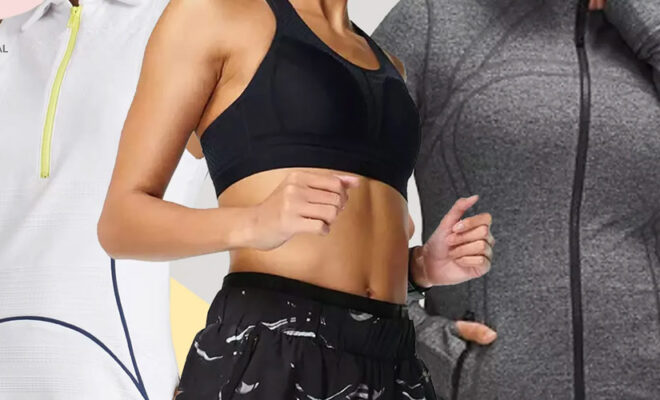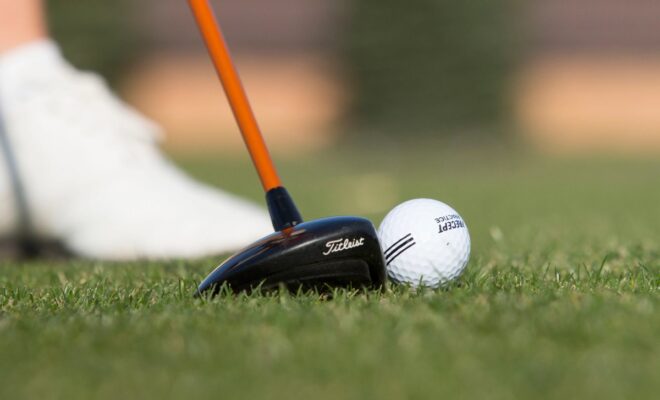Finding the Right Athletic Gear for Your Workout Routine

Key Takeaways:
- Selecting the right workout apparel can significantly improve your fitness experience and performance.
- Material, fit, and technological advancements are crucial for athletic wear.
- Learning about the benefits and maintenance of different gear can lead to more informed and sustainable choices.
Why Choosing Proper Athletic Gear Matters
It is commonly known among fitness enthusiasts that the clothing you wear during a workout can be as crucial as the workout itself. Avid gym-goers, runners, and athletes have long understood the need for high-quality gear to withstand the rigors of intensive training. The significance of athletic gear lies in its ability to provide the necessary support, protection, and comfort to improve performance and reduce the risk of injury during physical activity. Moreover, the right gear can also impact the mental aspect of training, allowing individuals to feel more confident and focused during their sessions.
Proper athletic gear has several implications for an individual’s workout routine. Firstly, it can prevent skin irritations and injuries caused by chafing and ill-fit, which are common hindrances many experiences due to inappropriate clothing. Sweat-wicking fabrics and ergonomic designs play a substantial role in ensuring that individuals remain dry and comfortable, helping them maintain a steady temperature and focus during their workouts. Additionally, quality gear can improve performance by enhancing flexibility, providing better muscle support, and allowing freedom of movement. As a result, selecting appropriate athletic attire is an investment in one’s health and well-being.
Decoding the Fabric: Material That Moves with You
Many people search for cost-effective solutions that maintain quality when buying athletic apparel. One of the alternatives they often turn to is using Under Armour promo codes to access premium workout clothing. Over time, workout clothing has undergone significant changes, with new materials offering unmatched benefits. The days of heavy cotton dominating sportswear are long gone. Materials like spandex and polyester blends are preferred for their stretchability, durability, and moisture management properties. Choosing the suitable material for your workout gear can significantly enhance your exercise experience. For instance, garments made from moisture-wicking fabrics can quickly remove sweat from your body, keeping your skin dry and helping to prevent overheating. Additionally, breathable fabrics such as mesh promote air circulation, offering a cooling effect especially advantageous during intense workouts or in warmer climates.
The Perfect Fit: Ensuring Comfort and Functionality
Only a little can disrupt a workout as quickly as uncomfortable attire. The hunt for the perfect fit is about finding a harmonious balance supporting individual movements without causing restriction or discomfort. This ideal fit varies for each person and their specific activity, meaning personalization is critical. For activities requiring a full range of motion, such as yoga or pilates, gear with ample stretch and soft seams is preferred to allow flexibility and prevent any irritable rubbing against the skin. In contrast, for more intense, high-impact exercises like running or cross-training, more structured and supportive clothing may be beneficial to ensure everything stays in place and reduces bouncing.
Aside from personal comfort, the right fit also impacts the garment’s functionality. For instance, compression wear must be tight enough to provide the intended muscle support and blood circulation benefits. On the other hand, loose-fitting clothes can pose safety hazards when using gym machinery, as they can get caught and cause accidents.
Innovations in Athletic Wear: A Technological Edge
The infusion of technology into athletic wear has been one of the most exciting advances in the fitness industry. Intelligent textiles and wearables have introduced a new dimension of data-driven workout experiences. Embedded sensors in garments can now track an array of metrics from heart rate to calorie burn, relaying this information to apps that help users optimize their training. Similarly, materials with embedded UV protection shield the skin from harmful rays during outdoor activities, and reflective technology in apparel enhances visibility for those who prefer to train at dawn or dusk.
Seasonal Considerations: Adapting Gear to the Climate
Sports and exercise activities are not limited to any particular season, which means the athletic gear we choose should be suitable for the conditions in which we train. Appropriate clothing according to the season is crucial for our comfort and safety. During summer, we must wear lightweight and sweat-wicking with ample ventilation to help us stay calm. On the other hand, thermal compression wear can keep us warm by preserving body heat during colder seasons. Moreover, clothing that has wind or water-resistant features can protect us from the elements and enable us to maintain a consistent workout routine regardless of the weather.
Supportive Footwear: Building a Foundation for Success
Choosing the proper footwear is a cornerstone of any effective workout routine. Sports-specific shoes are designed to support the movements typical of certain activities, providing the necessary grip, cushioning, and stability. Runners, for example, benefit from shoes that offer shock absorption, while weightlifters might look for footwear with a solid base to enhance power and balance. It is essential to consider not only the functionality but also the fit of the shoe, as poorly fitted footwear can lead to blisters, discomfort, and, in the worst-case scenario, long-term foot injuries.
Specialized Gear for Different Types of Training
Diverse exercise routines demand equally diverse gear. Sports-specific clothing addresses the particular stress and strains of each activity. For instance, the stretch and support needed for yoga gear are distinct from the moisture control required in cycling attire. Swimmers and aquatic athletes will prioritize different features than those engaging in team sports like soccer or basketball. Recognizing the unique demands of various sports is essential to choosing gear that provides optimal performance enhancements.
Smart Maintenance: Caring for Your Athletic Apparel
Investing in high-quality workout gear is just the first step; appropriate care maintains the gear’s functionality over time. Proper maintenance can also be a question of hygiene; as workout clothes are regularly exposed to sweat, they can harbor bacteria if not cleaned correctly. Fabric technology has come a long way. However, taking the time to read and adhere to care instructions will ensure that improper washing or drying techniques do not diminish these advanced properties—like compression, flexibility, and moisture-wicking.
Investing in Quality: A Cost-Effective Strategy
While the short-term savings from buying cheaper athletic gear might be tempting, the long-term benefits of investing in higher-quality items are undeniable. Quality gear will generally last longer, stay in better condition, and provide a consistent level of performance compared to their budget counterparts. Over time, purchasing fewer but better-quality items can lead to savings as the need for frequent replacements diminishes. This has positive implications for one’s wallet and benefits the environment through reduced consumption and waste.
Ethical and Sustainable Choices in Athletic Gear
Numerous athletic wear brands are now reevaluating their practices in response to the growing concerns regarding sustainability and ethical production. Many opt for eco-friendly materials such as recycled polyester or organic cotton. These brands are also committing to fair labor practices and reduced carbon footprints. Consumers who value sustainability in their lifestyle choices will find an increasing number of options that adhere to these principles without sacrificing quality or performance.









